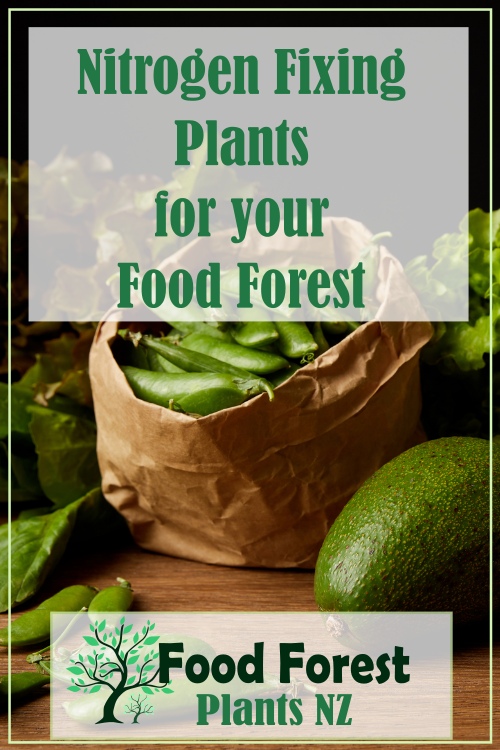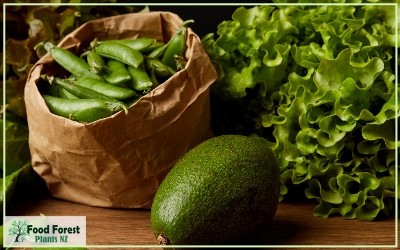Nitrogen fixing plants are a very special type of plant that lives in symbiosis with nitrogen fixing bacteria. The plants form nodules on their roots and release nitrogen in to the soil.
With many of these plants, they only release the nitrogen when the roots die, so it is good to have some of these plants that you chop and drop before they form seeds – plants will send the nitrogen up to the seeds which is why animals like chickens that eat large volumes of seeds have high nitrogen poop!
You can grab the PDF of nitrogen fixing plants here
Benefits of increasing nitrogen in the soil
The benefits of having more nitrogen rich organic matter in the soil include:
- higher general productivity, especially in fruiting plants
- richer and more diverse soil life
- more available phosphorus
- higher availability of various other nutrients
- higher capacity to hold nutrients
What type of plants fix nitrogen?
Generally speaking, legumes are what you are after if you want to fix nitrogen in to the soil. There are other nitrogen fixing plants, but not all of other families of other plants are nitrogen fixers. So if in doubt, plant a legume! Otherwise there is quite a substantial list of nitrogen fixing plants below.
What are the best nitrogen fixing plants?
The most commonly used nitrogen fixers are clover, beans, peas and lupins. This is because they are easy to obtain, the grow fast and tolerate most climates and they make great chop and drop mulch in a food forest garden setting.
There are however, many many other plants that fix nitrogen in the soil. These range from cover crops, to herbs, to flowers to whole trees!
The best Nitrogen Fixing Plants to grow in your Permaculture Garden or Food Forest
Here are the best nitrogen fixing plants for your garden or food forest, they are split in to plant types, then listed alphabetically.
Nitrogen fixing trees
Acacia
Alder
Autumn olive
Bayberry
Black
Locust
California mountain mahogany
Cape Broom
Carob
Cherry
silverberry
Chinese Yellow Wood
Chinese licorice
Evergreen
laburnum
Golden chain tree
Inga tree (tropical)
Japanese
Pagoda
Kakabeak
Kentucky Coffee Bean
Kowhai
Laburnum
trees
Locust tree
Mesquite trees
New Jersey
Tea
Persian silk tree
Purple Coral Pea Shrub
Redbud/judas
tree
Russian Olive
Seaberry
Siberian Pea
Shrub
Silverberry (Elaeagnus x ebbingei)
Silverthorn/thorny
olive
Silver wattle
Tagasaste
Tamarind (tropical)
Nitrogen fixing cover crops / green manures
Alfalfa (perennial)
Asparagus pea
Bean,
Fava/Bell
Beans
Clovers
Cowpea
Lespedeza,
Annual
Lespedeza, Serciea (perennial)
Medics
Pea,
Field
Pea, Winter
Peanut, Perennial
(perennial)
Soybeans
Sun Hemp
Vetch
Nitrogen fixing flowers
Bladder Senna
Californian lilac
Chinese wisteria
Dyers
greenweed
Earthnut pea
Glandular senna
Indigo (all
Indigofera genus)
Lupins
Purple Coral Pea Shrub
Spring
pea
Tree lupin
Wisteria, American
Wisteria,
Japanese
Wisteria, Kentucky
Nitrogen fixing edible food plants / vegetables
Ahipa
Beans, Bush
Beans, Garbanzo
Beans, All Others
(black, anasazi, lima, kidney, etc.)
Beans, Snap
Beans,
String
Breadroot (Prairie Turnip)
Chickpea
Jicama
Lentils
Peanut
(Groundnut)
Peas, Green
Peas, Snap
Peas, Snow
Peas,
Sweet
Nitrogen fixing herbs
Honeybush
Licorice, American
Licorice, European
Rooibos
Nitrogen fixing vines
Bean, Scarlet Runner
Bean, Wild Groundnut
Groundnut, Fortune’s
Groundnut, Price’s
Hog Peanut
Kudzu (Japanese arrowroot)
Pea, Beach
Pea, Butterfly
Pea, Earth-Nut
Peas, Vining Garden Peas
Vetch, American
Vetch, Bitter
Vetch, Tufted
Vetch, Wood
Wisteria, American
Wisteria, Japanese


